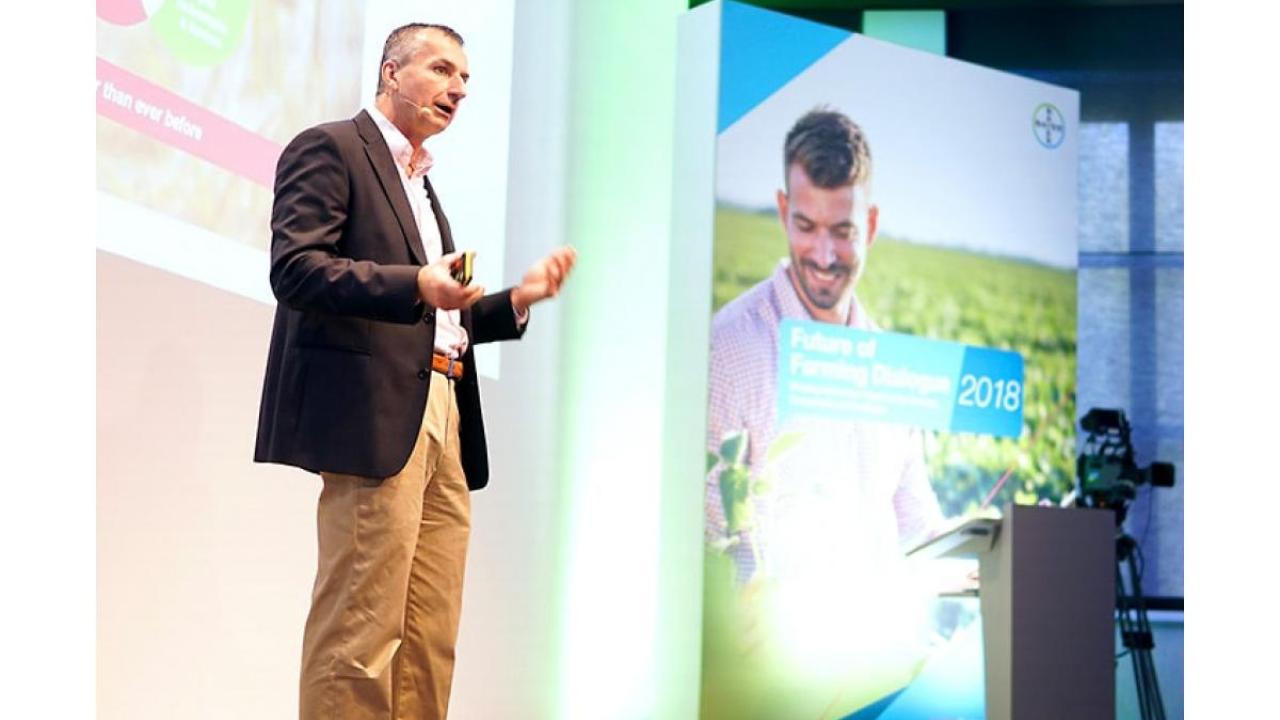Breakthrough Innovation Happens at the Intersection of Scientific Disciplines
by Bob Reiter, Head of Research & Development at Bayer, Crop Science Division
Published 05-19-22
Submitted by Bayer

Farmers have one of the most rewarding, yet most challenging jobs: feeding the world’s growing population efficiently and sustainably.
To do that, they need to make 40 or more key decisions every growing season. If they make one wrong choice at any point, there are no do-overs. Their livelihood for the entire year could be impacted.
Further complicating the challenge is that each of those 40-plus decisions requires different tools and expertise to navigate. Choices range from picking the right hybrid seeds to plant in each specific section of each field, to which pesticides to use and how to apply, and exactly when to harvest each crop.
And while farmers will always have to battle weeds, pests, plant diseases and unpredictable weather conditions, the exact nature of those threats is different for each farmer and each region of the world. There is no one-size-fits-all solution. There’s also no “let’s-fix-this-forever” solution. Threats to crop productivity are constantly evolving due to the pressures of climate change, as well as the fact that weeds and insects can become resistant to pesticides over time.
That’s exactly why farmers will always need new modes of action and technology to help them keep producing the food the world needs without exhausting the earth’s natural resources.
They need tools that enable them to adopt more sustainable agronomic practices. They need broad and deep insights about every aspect of their operations to point them toward the best data-based decisions. And they need all of it to work together in a seamless and integrated approach that offers them tailored solutions for their farm, helping them to make the most of each acre. This is what drives the new Bayer Crop Science organization.
Paving the way for scientific breakthroughs
About 20 years ago, I witnessed firsthand how traditional plant breeding converged with the newer science of molecular biology to solve previously unmet challenges in agriculture. As I recalled in a recent article, the collision of these two worlds transformed the way the ag industry breeds plants and gave us the ability to bring improved seeds to farmers faster than ever.
That experience taught me a lesson I’ll never forget: Breakthroughs in science often happen at the intersection of diverse scientific disciplines.
Bayer Crop Science has paved a new intersection by bringing together market-leading capabilities in biology, breeding, chemistry, biologics and data science. We now have nearly 8,000 R&D-focused employees collaborating both internally and externally to develop and deliver the next breakthrough ag innovations that will benefit farmers – and the planet – in the months and years ahead.
Take for example weed control solutions. In the past, our industry has developed herbicides and herbicide-resistant seed traits separately and sequentially. So, one company might spend 10 years or more to develop a new herbicide product. Then, only after this part was completed, would another company begin to develop a new compatible herbicide-tolerant trait and breed it into commercial seed varieties, which might take another 10 to 12 years. Think about those numbers farmers could literally spend a third or even half of their career waiting for the release of a new crop protection product. As someone who is passionate about using science to improve lives, I strongly believe that the industry needs to do better than that.
As a leader in developing both seeds and chemistry, Bayer Crop Science can now develop both herbicide and the complementary herbicide-tolerant trait products simultaneously, dramatically reducing development time. This type of coordinated research and development will once again bring better, more sustainable products to farmers’ fields faster than ever before.
Additionally, we are ideally positioned to expand what’s possible when we combine better technology with better data insights. Digital tools like Climate FieldView™ provide data-powered recommendations that inform farmer decisions, like exactly when to spray fungicide for a developing disease, or when, where and how much nitrogen fertilizer to apply, helping to maximize harvests, reduce waste and improve sustainability.
While our teams are well-positioned to deliver the innovation and digital integration that’s needed to help farmers, we also know we’re not the only source of great ideas. External collaboration remains a big part of the equation for delivering tailored solutions for farmers. We will continue to work with partners in the public and private sectors on a wide range of collaborative projects like the Herbicide Innovation Partnership or Joyn Bio.
We also know innovation must be matched with complete confidence in the safety of everything we do for people and the environment. We intend to continue operating with transparency, sharing information to foster understanding of the exceptional safety standards required to bring our new technology to market. We will continue our open dialogue with our stakeholders and society.
I’m excited to play a part in this next wave of innovation and integration that will support farmers in their extraordinarily challenging mission. In the years to come, we’ll see increasingly tailored solutions that will integrate all available tools to help farmers with each of their 40-plus key decisions each year, simplifying tough choices, minimizing risks and maximizing prospects for successful harvests. And ultimately, these tools will play a significant role in the world’s efforts to ensure a stable food supply and healthy planet for future generations.

Bayer
Bayer
Bayer: Science For A Better Life
Bayer is a global enterprise with core competencies in the Life Science fields of health care and agriculture. Its products and services are designed to benefit people and improve their quality of life. At the same time, the Group aims to create value through innovation, growth and high earning power. Bayer is committed to the principles of sustainable development and to its social and ethical responsibilities as a corporate citizen. In fiscal 2015, the Group employed around 117,000 people and had sales of EUR 46.3 billion. Capital expenditures amounted to EUR 2.6 billion, R&D expenses to EUR 4.3billion. These figures include those for the high-tech polymers business, which was floated on the stock market as an independent company named Covestro on October 6, 2015. For more information, go to www.bayer.com.
More from Bayer

